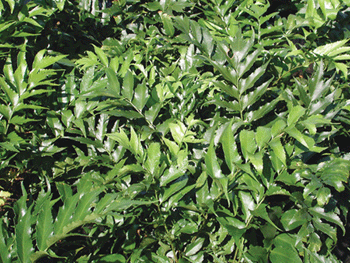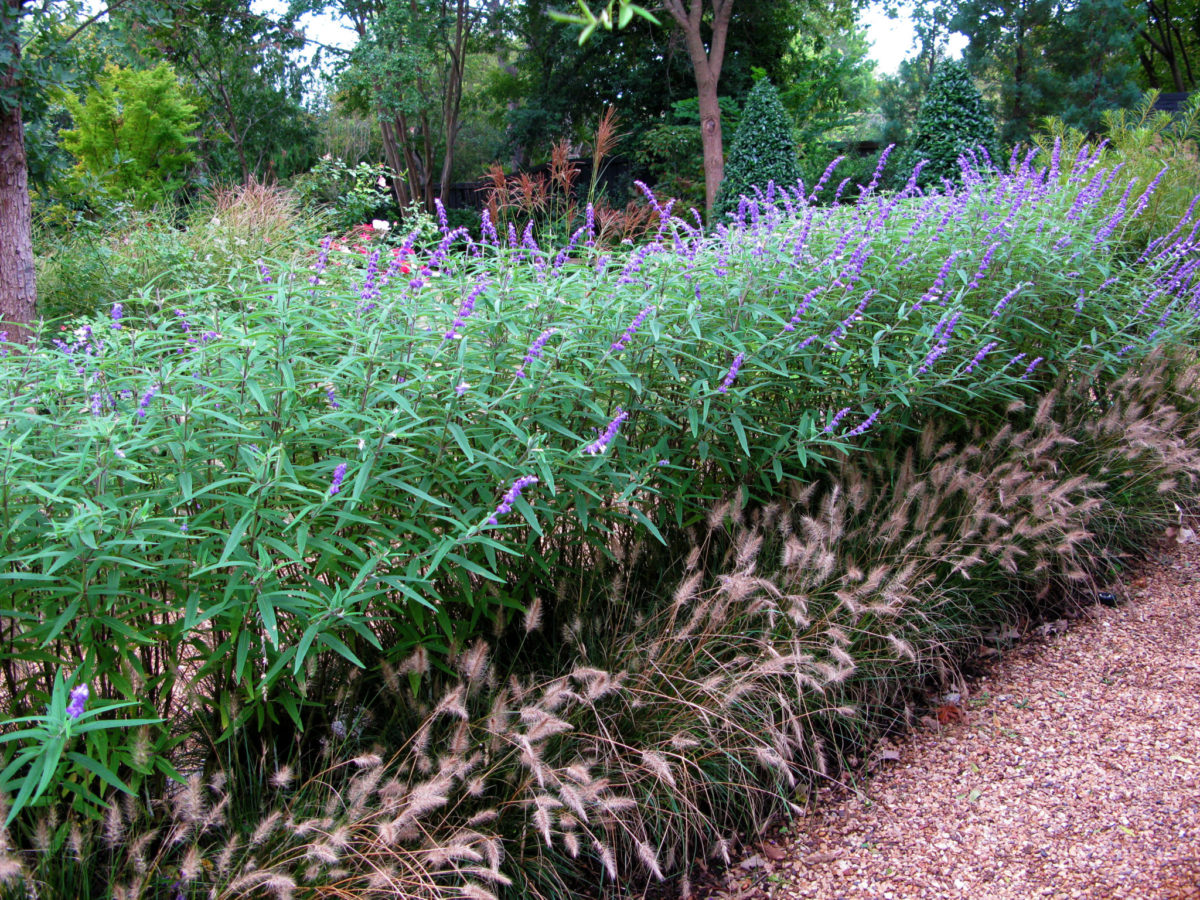Russian Sage

Russian Sage
(Perovskia atriplicifolia)
The airy spikes of Russian sage float like a mist of lavender in a sunny border. A steadfast performer through the dog days of summer in Texas, Russian sage prefers minimal water and fertilizing. It can get large–usually 3′-4′, sometimes taller–but its transparency belies its size and allows it to combine well with many other border perennials.




